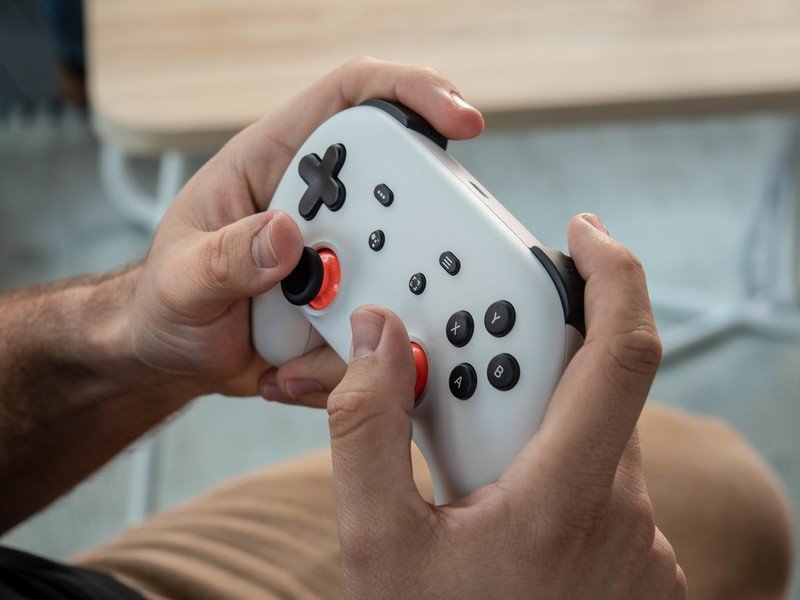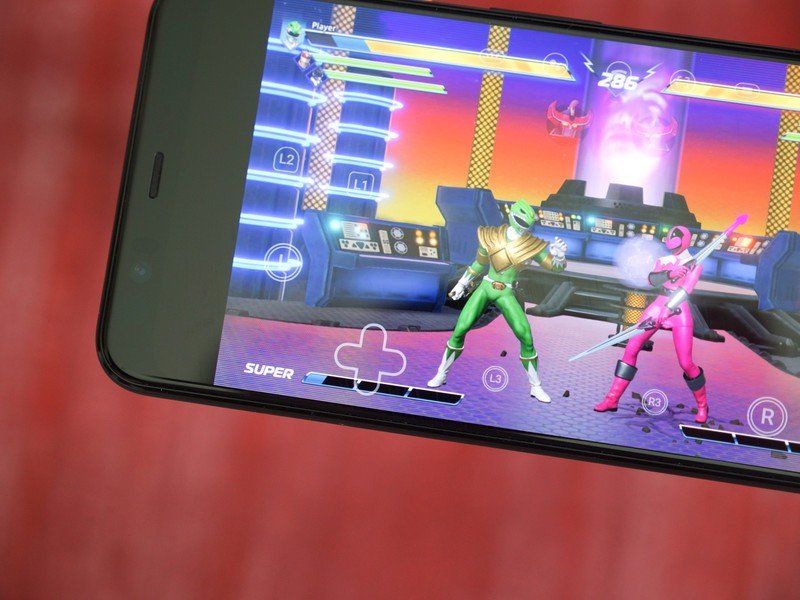Stadia's on-screen touch controls are equal parts amazing and terrible

In the gaming world right now, all eyes seem to be glued to what Microsoft and Sony are doing with their next-gen consoles — and rightfully so. This upcoming generation of gaming looks to be hugely impressive, with both the Xbox Series X and PS5 promising experiences unlike anything we've had before.
I'm just as excited about these consoles as everyone else, but I've also been keeping my eyes on what Google's been doing with Stadia.
A little over a week ago, Google ushered in a plethora of important updates for its game streaming service. New titles were added to Stadia Pro (including the excellent SUPERHOT), users gained the ability to change their streaming resolution, and a new test program was launched that expands Stadia to virtually all Android smartphones. In addition to all of that, Google also added virtual touch controls — aka the ability to play Stadia games on your phone without the need for a physical controller.
Touch controls can now be used with all Stadia games, and it's as easy as tapping a new button when launching a title on your phone. That may sound like a nightmare on paper, but by removing the need to use an actual controller, it means your Stadia games are now more accessible than ever.
I've spent the past couple of days trying these touch controls for myself, and while I greatly appreciate the grab-and-go nature they further add to the service, I think they're best seen as an alternative you can use in a pinch rather than a proper replacement for a legit controller — at least with the current implementation.

As noted above, using touch controls is incredibly easy. Open the app on your Android phone, make sure you don't have a controller connected to it, select the game you want to play, and tap the "Try touch gamepad" button that pops up on the prompt asking you to link a controller to your phone. Just like that, you'll see a bundle of virtual buttons flood your screen.
At its core, the layout of the on-screen buttons is great.
The buttons are laid out similarly to the physical Stadia Controller, but with a few subtle tweaks to make everything fit on the screen without getting in the way of your game. Specifically, there are separate buttons for L3 and R3, the left analog stick is moved slightly above the right one, and the Pause, Google Assistant, Share, and Stadia buttons are put at the very top.
Get the latest news from Android Central, your trusted companion in the world of Android
There's excellent haptic feedback for all of the buttons (at least on my Pixel 4 XL), and while I wish Google allowed you to customize the layout of them, the current setup works quite well and feels very natural.
Touch controls will never be as good or precise as a physical controller, but for certain games on Stadia, it results in a perfectly enjoyable experience. In a game like SUPERHOT where you need to plan all of your moves rather than have a crazy fast trigger finger as you do in other shooters, everything translated rather nicely. I was able to make my way through a few different levels using nothing but the on-screen controls, and after cranking up the sensitivity for the right analog stick, the gameplay felt surprisingly great.

I also had a good time playing Power Rangers: Battle for the Grid. I'm a very casual player when it comes to fighting games, and for a couple rounds of button smashing my way through baddies, the touch controls served their purpose perfectly.
In these instances where the controls work well, it's a magical experience. Being able to play a console-quality game with literally nothing but an Android phone is insane, and Google deserves a lot of credit for being able to pull this off.
All of that said, the experience isn't perfect. In fact, it's pretty far from that.
Playing games like PUBG and Destiny 2 is...not a good experience.
Take PUBG and Destiny 2, for example. These are two games that require a lot of fast, precise reactions in order to stay alive, and Stadia's touch controls falter quite a bit with them. Simultaneously moving your character and looking around is fine, but when it comes time to attack or defend yourself, it's a different story. If you want to press L2 to aim down sights and fire your gun, you need to take your thumbs off the analog sticks and press L2 + R2 — thus losing your ability to move or aim. This translates to a lot of in-game deaths, and it makes these titles virtually unplayable.
And this isn't just because there's a learning curve that you need to learn. Playing a shooter or action/adventure game where you need to press a lot of buttons quickly and precisely isn't possible here, seeing as how you're limited to interacting with two buttons at once where you can use four on a control (both analog sticks and two buttons/triggers).
We've seen a few games try to offer console-esque experiences that are designed with mobile in mind, a perfect example being Call of Duty: Mobile. The graphics aren't as amazing as what you can get with Stadia and there are plenty of opportunities for in-app-purchases, but the game's controls are some of the best I've ever encountered for a mobile FPS.

Aiming and shooting is a nightmare with Stadia's on-screen controls, but in CoD: Mobile, it feels excellent. Players can use a Simple Mode in which your gun automatically fires when you aim at an enemy, or you can use the Advanced Mode which allows you to control your shots but have the gun automatically fire when you aim-down-sights. Add that together with being able to change the entire layout of the on-screen controls, and you quickly realize that a couple of small tweaks allows for a vastly better gaming session.
This is an impressive feature, even if there's still a lot of work to be done.
That's ultimately the biggest problem with Stadia's on-screen controls. They work in a pinch and perform better with certain types of games than others, but all they're doing is emulating a physical controller rather than offering a UX that was made with mobile gaming in mind.
Google could ask developers to adapt their games to work better with the on-screen controls, but seeing as how the company's having enough trouble getting games on the platform in the first place, I don't see that happening any time soon.
I'm very interested to see how Google tweaks its on-screen controls as time goes on, because even as awful as they can be right now, the fact that you can play Destiny and Tomb Raider with only your phone is nothing short of amazing. I don't know if Stadia will ever get to the point where the on-screen controls feel as good as games that were explicitly designed for a touchscreen, but I am very interested in seeing where we go from here.
Just don't play PUBG with them. It's seriously awful 😅.
It took five months but I finally fell for Stadia — here's why

Joe Maring was a Senior Editor for Android Central between 2017 and 2021. You can reach him on Twitter at @JoeMaring1.
